What You Need to Know in Under 5 Mins
Almost all (98%) of consumers read ratings and reviews at least sometimes when shopping for footwear online. 85% do so regularly or always.
And with a conversion lift of 108.6%, those shoppers who interact with ratings and reviews are more than twice as likely to convert as those who don’t.
Clearly, ratings and reviews can be a huge driver for success in the shoes category.
Review Benchmarks: Shoes
The following benchmarks come from an analysis of product pages on PowerReviews client sites in the shoes category.
69.7%
Review Coverage
4.5
Average Star Rating
174
Average Review Length
194
Reviews per Product
35.1%
Average Media Coverage
Monitoring the above metrics can help you ensure you’re generating both review quantity and quality — the essential cornerstones of any high-impact UGC strategy. Together, you can think of them as the North Star guiding your UGC strategy.
69.7% of the shoes we analyzed have at least 1 review, which is a good starting point. However, it’s worth noting that the fewer reviews a shoe has, the more hesitance shoppers have about adding it to their carts — with 5% of shoe shoppers flat-out refusing to buy shoes that have 0 reviews.
This is just below the sweet spot we recommend for the optimal conversion lift. Our research shows that products with ratings between 4.75 – 4.99 stars have the highest conversion rates.
Longer reviews tend to have higher conversion rates, as they provide richer detail and more relevant information for shoppers. We recommend a stretch goal of 500 characters for the maximum uplift.
The average shoe in our analysis has 194 reviews. This is excellent, as 90% of shoe shoppers say they are comfortable purchasing a clothing item as long as it has 100–500 reviews or less. Given consumers’ high demands for review volume in the shoe category, though, brands must be consistently reaching out to customers to collect new reviews.
35.1% of the footwear products we analyzed have at least one user-generated product image or a video. This is a strong start, but consumers expect to see much more user-generated imagery from shoe brands. A majority (71%) of consumers “always” or “regularly” seek out user-generated imagery when shopping for shoes online. And, increasing this percentage can work wonders for your conversion rates, as visitors who interact with user-generated photos and videos are 103.9% more likely to convert.
How Review Volume Impacts Conversion for Footwear Brands
So, if the average footwear product boasts 194 reviews, can you rest easy once each of your shoes has that many reviews?
You can, but you won’t see as many conversions as you would if you kept on pushing for more reviews.
As you can see from the chart below, there is a direct relationship between review volume and conversion lift. The more reviews a shoe has, the more likely it is to be purchased.
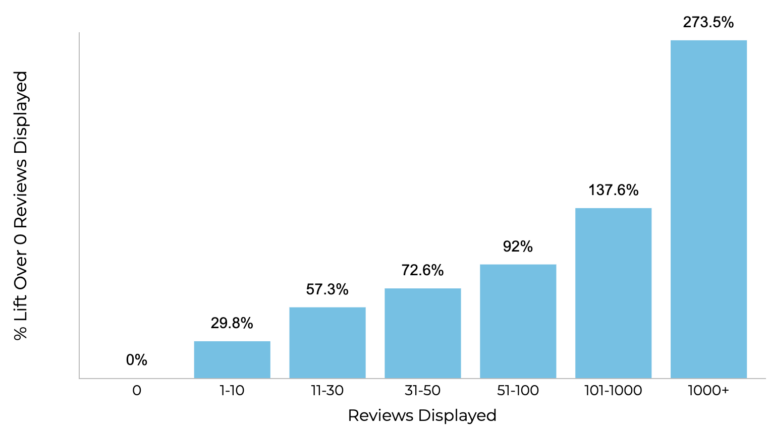
This chart shows the lift in conversion when a customer sees a product page with a certain number of reviews displayed vs. a product page with 0 reviews. Shoe brands that aim to gather at least 100 reviews for their products can enjoy big upswings in their conversion rates. But once they reach 1,000 reviews per product, their conversion lift really skyrockets.
What Makes a Great Footwear Review?
Review volume is important, but so is review quality. Let’s take a look at what makes a great review for a product in the footwear category, courtesy of Crocs.
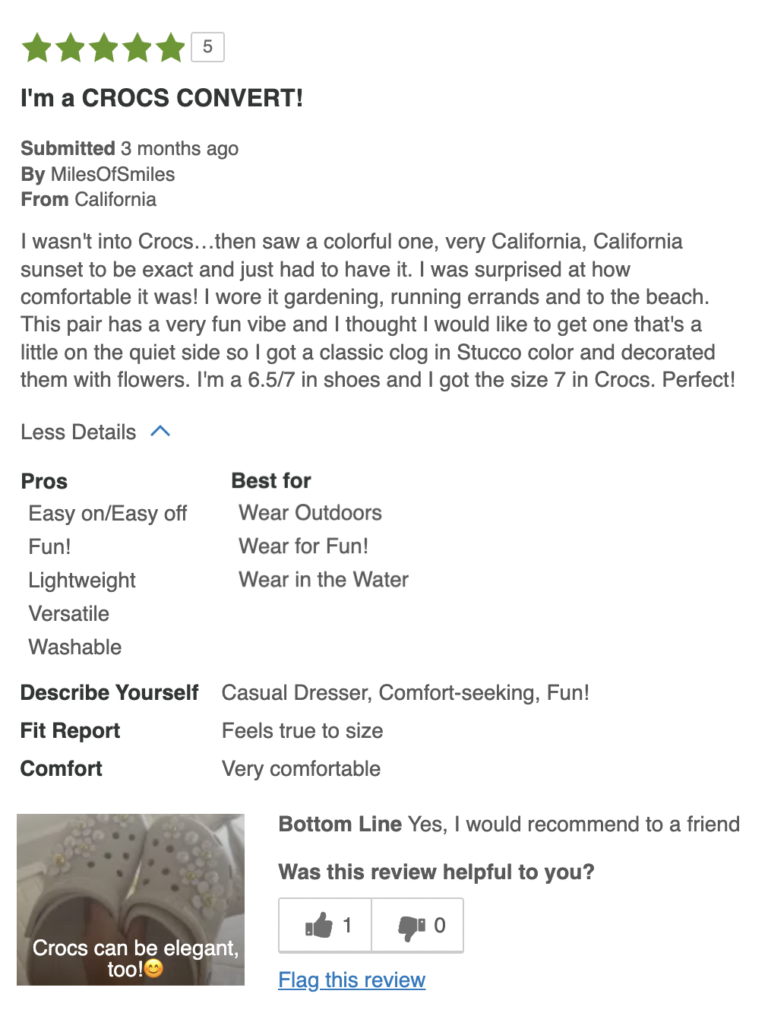
When people are shopping for shoes, they are looking for very specific, in-depth information that only reviews from other customers can provide in a credible and authentic way. For example, shoe shoppers want to know:
- Is this shoe comfortable?
- Where, and for what activities, can I wear this shoe?
- Is the fit of this shoe in line with other shoes from this brand?
- What are the real pros and cons of this shoe, regardless of what the brand claims?
- Is this review from someone like me? (e.g. Do we have the same personal style? Do we like the same kind of shoes?)
These are the kind of questions that can only be answered by a detailed review from another verified customer. Review elements like star rating and review count pique a shopper’s interest, getting them to click through to the product page. But it’s the quality of a review that gets them to actually add that shoe to their cart. In this way, review quality and quantity work together, nudging shoppers down the funnel.
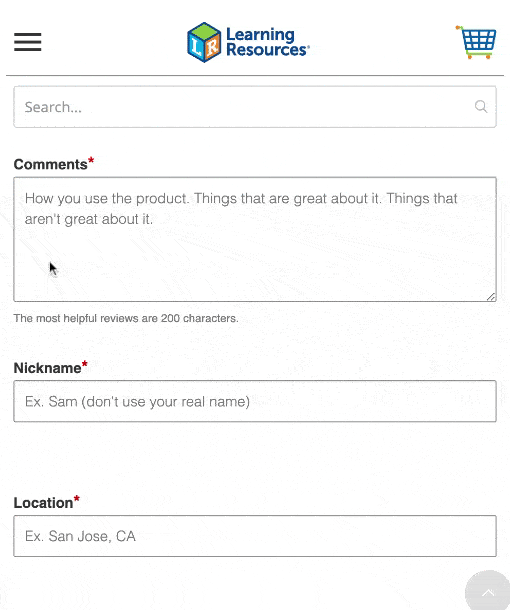
How to Collect Footwear Reviews That Convert Browsers Into Buyers
So, how can shoe brands maximize the quality of their reviews, with an eye towards lifting conversions? It all comes down to how you optimize your review form.
At PowerReviews, we enable brands to add custom questions to their review forms to zoom in on the most relevant information for their customers. Many of the questions we spoke to in the previous question — fit, use case, personal style — are the most impactful review questions for footwear brands.
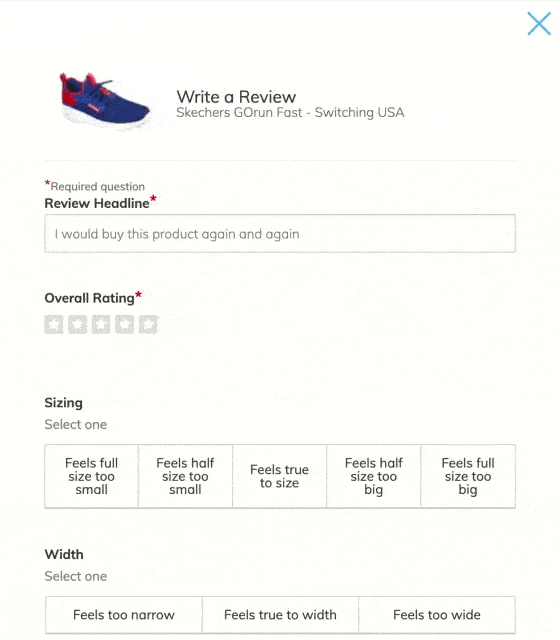
The shoe category is one that can be vulnerable to high levels of returns. With 75% of shoppers citing poor fit as a top reason for returns, providing this additional fit information in reviews can do a lot to limit returns.
You don’t have to just take our word for it. In fact, we surveyed over 9,200 shoppers and 66% of them said that the ability to read ratings and reviews prior to purchase would have made them less likely to return. Slightly more (69%) said that being able to see photos and videos from other consumers first also decreases their likelihood of making a return.
So, add questions to your review form that help shoppers understand more about fit. For example, does the shoe run big or is it true to size? How would a reviewer describe their foot shape or width? Encourage reviewers to add a photo to their review for more context.
These custom questions are particularly important for the shoe category, even more so than others. After comfort, “fit and sizing” information is the top consideration for shoppers when purchasing footwear, with 89% of shoe shoppers seeking it out when shopping for new shoes.
Once you have your review form and display optimized for maximum impact, it’s time to go out and collect those reviews! Try:
- Sending post-purchase emails
- Asking for reviews on receipts and invoices
- Including review requests in your product packaging
- Asking for reviews via text or social media
- Hosting a review sweepstakes or contest
- Offering loyalty points in return for a review
- Running a product sampling campaign
Bonus Step: Syndicate Your Reviews for Maximum Impact
Let’s look to the future for a moment. Picture it: You’ve got a strong UGC strategy that’s been up and running for months, you’re collecting great reviews, and they’re all on your website for your customers to see.
This would be great if shoppers exclusively purchased their shoes through footwear brands’ websites — but they don’t. Only 38% of shoppers start their purchase journey on a brand’s website. The other 62% start on a retailer’s website, Amazon, or elsewhere.
Here’s where review syndication comes in. In essence, review syndication allows you to push reviews collected on your own D2C website out to the websites of your retail partners. For example, here’s a review collected on Skechers that was syndicated to both Zappos and Shoe Carnival.
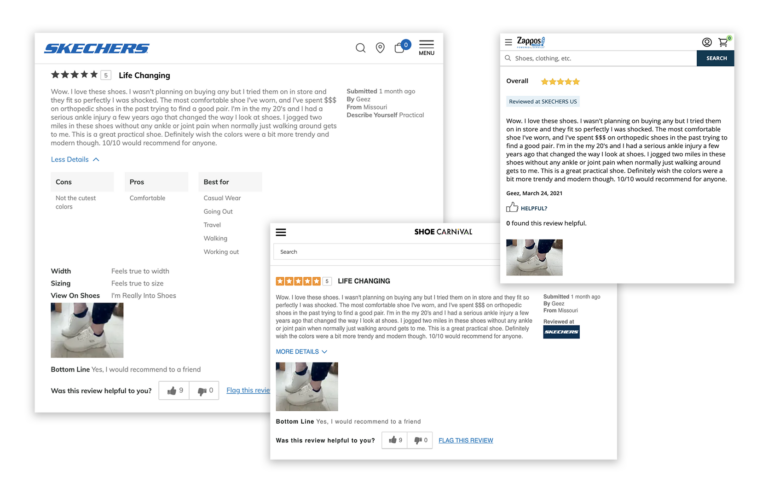
From a single review, Skechers was able to create 3 reviews, all on websites where their customers may encounter their shoes.
Review syndication exponentially increases the value and reach of your review, putting it in front of more eyeballs and increasing your sales volumes at your retail partners. We recommend choosing retailers based on your sales data, as your best-selling retailers are the ones where you’re going to get the biggest uplift from syndication.
Is your UGC strategy due for a refresh? Contact PowerReviews today to learn more about how UGC can grow your sales.


